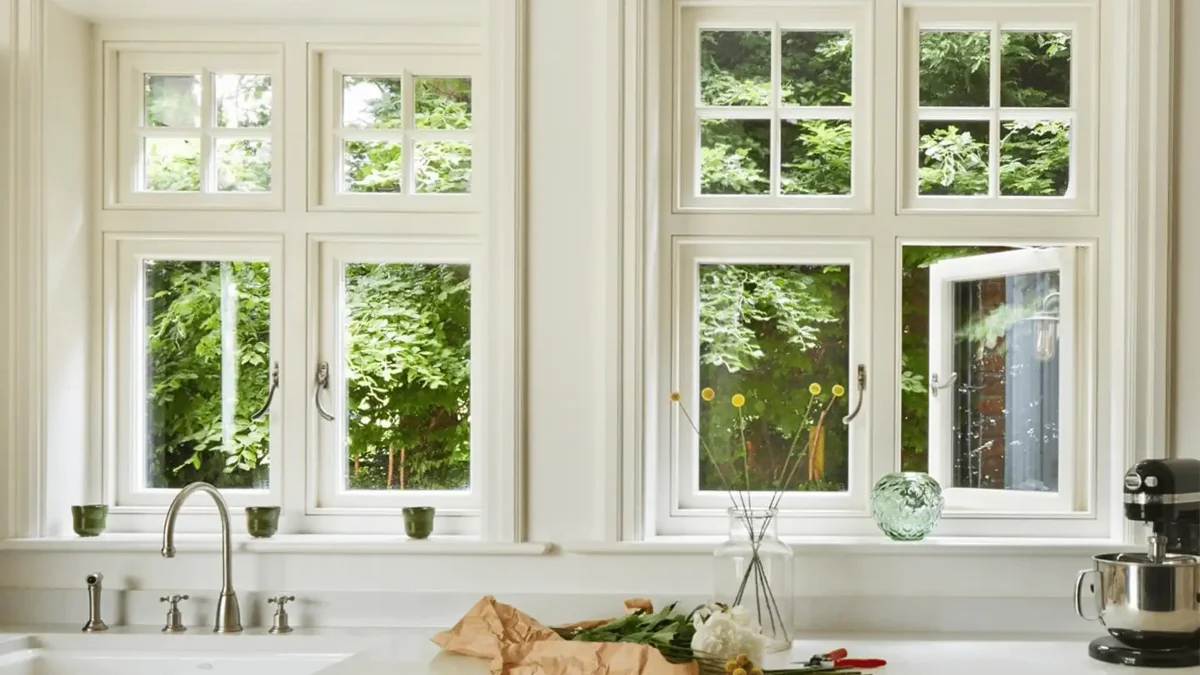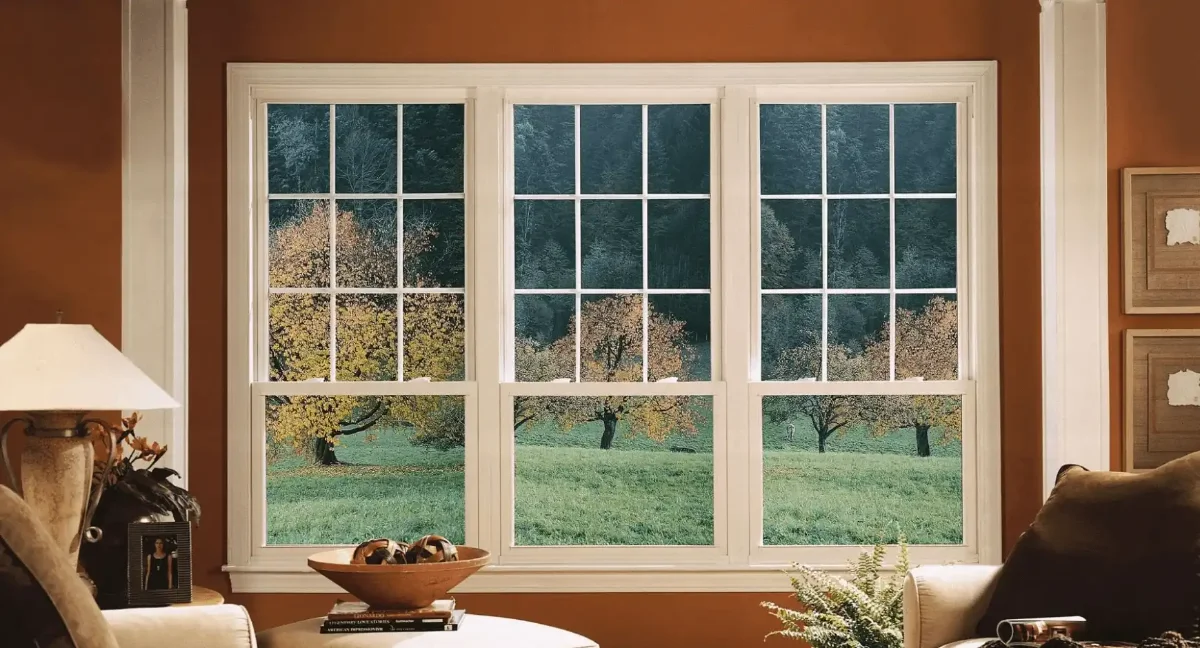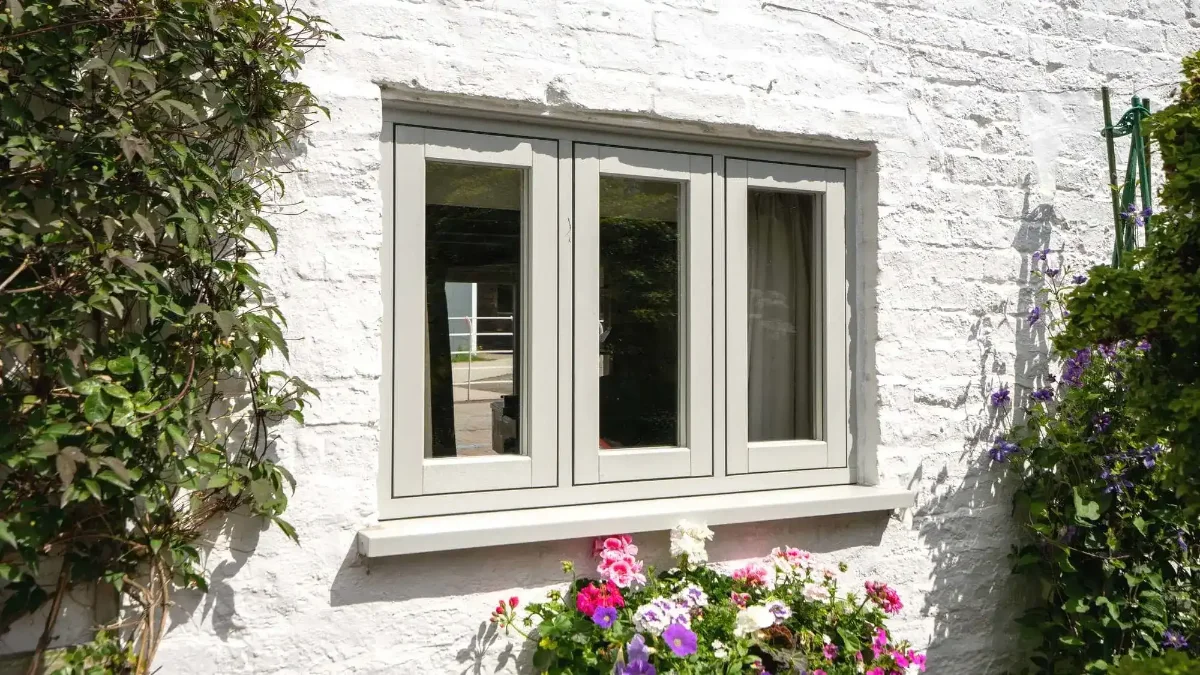A Town Shaped by Windows
Walk down South Street or along the Causeway in Bishop’s Stortford, and you’re walking through four centuries of window evolution. Every Georgian terrace, Victorian villa, and Edwardian semi tells the story of how sash windows transformed from luxury novelty to architectural necessity—and back to cherished heritage feature.
I’ve spent nearly forty years working on these windows, from emergency repairs on 18th-century originals to installing modern sash replacements that honor our town’s architectural heritage. Each project connects me to the craftsmen who came before—the Georgian joiners who perfected the counterweight system, the Victorian glaziers who mastered larger panes, and the 20th-century renovators who nearly lost this tradition entirely.
This is the story of how sash windows became the defining feature of Bishop’s Stortford’s streetscape, why they nearly disappeared, and how they’re experiencing a remarkable renaissance in the 21st century.
The Georgian Revolution (1714-1830): When Sashes Arrived
Sash windows didn’t originate in Bishop’s Stortford—that honor belongs to late 17th-century London. But they found their perfect expression here in the Georgian terraces that still define our town center.
The earliest surviving examples date from around 1720, when Bishop’s Stortford was transforming from medieval market town to coaching hub. The George Hotel on North Street, built in 1750, showcases classic Georgian proportions: tall, narrow windows with six-over-six glazing patterns that maximized light while maintaining structural integrity.
Why Sashes Conquered Georgian Architecture
The counterbalanced system solved a fundamental problem. Medieval casement windows opened inward, consuming precious interior space. In Georgian townhouses, where rooms were narrow and furniture placement critical, sash windows offered ventilation without spatial compromise.
The technology was ingenious for its time. Lead weights, hidden within the window frame, perfectly balanced each sash. Pulleys and cords allowed effortless operation—a fingertip could raise or lower windows weighing 30 pounds or more.
The Glazing Bar Revolution
Early Georgian sashes featured thick glazing bars creating small panes—not for aesthetic reasons, but from manufacturing necessity. Crown glass, blown by hand, could only produce sheets about 8 inches square. The familiar grid pattern of Georgian windows reflects this technical limitation turned into architectural virtue.
By 1800, Bishop’s Stortford’s wealthier merchants were commissioning windows with increasingly refined proportions. The houses along Castle Street, built between 1790-1810, show the Georgian sash at its peak: perfectly balanced proportions, elegant glazing bar patterns, and joinery quality that has endured for over two centuries.
The Victorian Transformation (1837-1901): Bigger, Bolder, Better
The Victorian era brought dramatic changes to Bishop’s Stortford’s windows. The arrival of the railway in 1842 transformed the town from coaching stop to commuter hub, triggering a building boom that reshaped entire neighborhoods.
The Glass Revolution
Victorian innovations in glass manufacturing changed everything. Cylinder glass, introduced in the 1830s, allowed much larger panes. Suddenly, the small Georgian panes seemed old-fashioned. Victorian sashes grew taller, with two-over-two or even single-pane configurations becoming fashionable.
The houses along Maze Green, built in the 1860s, demonstrate this shift perfectly. Where Georgian windows featured 6-over-6 or 8-over-8 glazing patterns, these Victorian villas sport elegant two-over-two sashes that flood interiors with light.
Bay Windows and Architectural Ambition
The Victorian era also introduced the bay window to Bishop’s Stortford. These projecting features, impossible with earlier building techniques, became status symbols for the growing middle class. The substantial Victorian villas along London Road showcase elaborate bay windows with sash configurations that would have amazed Georgian builders.
Engineering Improvements
Victorian sash windows incorporated numerous technical refinements:
- Spiral sash balances replacing traditional cord-and-weight systems
- Improved weatherstripping using felt and metal strips
- Standardized hardware mass-produced in Birmingham’s factories
- Better timber treatment extending window lifespan
These improvements made sash windows more reliable and weather-resistant, cementing their dominance in Bishop’s Stortford’s expanding suburbs.
The 20th Century Decline: When Tradition Nearly Died
The period between 1920-1980 nearly witnessed the extinction of sash windows in Bishop’s Stortford. Three factors combined to threaten this architectural tradition:
Material Shortages and Economic Pressure
Both World Wars disrupted traditional building trades. Skilled sash window makers joined the armed forces or transferred to munitions work. Timber became scarce, and maintenance was deferred. By 1945, many of Bishop’s Stortford’s sash windows were in poor condition.
The Modernist Movement
Post-war architecture rejected Victorian “fussiness” in favor of clean, modern lines. Steel casement windows, popularized by architects like Walter Gropius, seemed more appropriate for the modern age. Many Georgian and Victorian buildings received unsympathetic “improvements”—sash windows replaced with metal casements that ignored original proportions.
The uPVC Revolution
The 1970s brought double glazing and uPVC frames to Bishop’s Stortford. Marketing emphasized energy efficiency and low maintenance—appealing messages during the oil crisis. Thousands of historic sash windows were ripped out and replaced with modern alternatives.
I started my career during this period, often tasked with removing “old-fashioned” sash windows. The waste was heartbreaking—centuries of craftsmanship discarded for short-term convenience.
Conservation Awakening
The tide began turning in the 1980s. The designation of Bishop’s Stortford’s conservation area in 1969 started protecting the most important historic buildings. Gradually, homeowners began appreciating what they’d nearly lost.
The restoration of the Corn Exchange in the 1990s, with its magnificent sash windows carefully restored rather than replaced, marked a turning point in local attitudes toward historic windows.
The Modern Revival: Rediscovering Heritage
The 21st century has witnessed an extraordinary renaissance of sash windows in Bishop’s Stortford. This revival combines respect for historic character with modern performance requirements.
Planning Policy Changes
Stricter conservation area controls now protect historic windows. The 2019 updates to Bishop’s Stortford’s conservation area guidelines specifically encourage sash window retention and appropriate restoration.
Planning officers now understand that well-maintained sash windows contribute more to the town’s character than modern replacements, however well-intentioned.
Technical Innovations
Modern sash windows combine traditional appearance with contemporary performance:
- Slim double glazing achieving U-values of 1.4 W/m²K while maintaining authentic proportions
- Draught sealing systems invisible from outside but dramatically improving comfort
- Security hardware meeting modern standards without compromising historic appearance
- Low-maintenance finishes extending repainting cycles while preserving authentic colors
The Heritage Industry
Bishop’s Stortford now supports several specialist sash window companies, including craftsmen trained in traditional techniques. The town has become a regional center for heritage window restoration, with projects extending throughout Hertfordshire and beyond.
Property Values and Market Recognition
Estate agents confirm what homeowners suspected: properties with well-maintained or appropriately restored sash windows command premium prices. The character and craftsmanship these windows represent appeals strongly to modern buyers seeking authenticity in an increasingly standardized world.
Iconic Examples: Bishop’s Stortford’s Sash Window Heritage
The George Hotel, North Street (c.1750) Perfect Georgian proportions with six-over-six glazing patterns. Recent restoration preserved original glazing bars while improving thermal performance through slim double glazing.
Castle Street Georgian Terraces (1790-1810) Showcase the Georgian sash at its most refined. Many retain original crown glass, creating the characteristic rippled reflections that modern glass cannot replicate.
London Road Victorian Villas (1860-1890) Demonstrate the Victorian evolution toward larger panes and bay window configurations. Several have been sensitively restored, proving that Victorian sashes can achieve modern energy standards.
The Corn Exchange (1828, restored 1995) The town’s most prominent sash window restoration project. This Grade II listed building’s windows were completely rebuilt using traditional techniques, creating a template for subsequent heritage projects.
Challenges and Solutions: Preserving the Past for the Future
Modern sash window conservation faces several challenges:
Thermal Performance vs. Historic Authenticity
Building Regulations require U-values that traditional single glazing cannot achieve. Solutions include:
- Slim double glazing maintaining authentic proportions
- Secondary glazing preserving original windows while improving efficiency
- Selective restoration prioritizing the most visible elevations
Skills and Craftsmanship
Traditional sash window making requires specialized knowledge increasingly rare in modern construction. Bishop’s Stortford’s heritage window companies invest heavily in apprenticeship programs, ensuring these skills survive for future generations.
Cost and Accessibility
Heritage window restoration costs significantly more than standard replacement. However, grant programs and specialist finance options are making conservation more accessible to ordinary homeowners.
For detailed information about modern sash window options, see our comprehensive sash windows guide, and our comparison of sash versus casement windows. You might also find our window installation cost guide helpful for budgeting restoration projects.
The Future of Sash Windows in Bishop’s Stortford
Looking ahead, sash windows face both opportunities and challenges:
Climate Change and Energy Efficiency
Rising energy costs make thermal performance increasingly important. Future innovations may include:
- Vacuum glazing achieving superior insulation in traditional proportions
- Smart glass technology integrated into heritage designs
- Advanced weatherstripping systems invisible from outside
Planning Policy Evolution
Conservation area policies continue evolving, generally becoming more protective of historic windows while allowing appropriate improvements for energy efficiency.
Cultural Appreciation
Growing appreciation for craftsmanship and authenticity suggests strong future demand for heritage windows. Younger homeowners increasingly value character over convenience, reversing decades of modernization.
Lessons from Four Centuries
The history of sash windows in Bishop’s Stortford teaches several important lessons:
Innovation Within Tradition The most successful periods combined respect for established proportions with technical innovation. Georgian and Victorian builders constantly improved their craft while maintaining aesthetic continuity.
The Cost of Neglect The mid-20th century’s wholesale replacement of historic windows impoverished the town’s architectural character and created maintenance problems that persist today.
The Value of Expertise Quality sash windows require specialized knowledge and craftsmanship. Attempts to economize through inexperienced contractors invariably create long-term problems.
Heritage as Investment Well-maintained historic windows add both character and value to properties. The initial cost of proper restoration is typically recovered through enhanced property values and reduced maintenance needs.
Preserving Our Window Heritage
As someone who has dedicated his career to Bishop’s Stortford’s windows, I believe we have a responsibility to preserve this architectural heritage for future generations. Every restored sash window connects us to the craftsmen who built our town, while every inappropriate replacement severs that link forever.
The sash window’s four-century journey—from Georgian innovation through Victorian refinement, 20th-century decline, and 21st-century revival—mirrors Bishop’s Stortford’s own evolution. These windows aren’t just functional elements; they’re the eyes through which our town has watched centuries of change.
Planning a sash window restoration project? Request your heritage consultation and we’ll help you navigate conservation requirements, specify appropriate materials, and connect you with craftsmen who understand the importance of preserving Bishop’s Stortford’s window heritage for future generations.
Because some traditions are too valuable to lose—and in Bishop’s Stortford, sash windows are definitely one of them.




